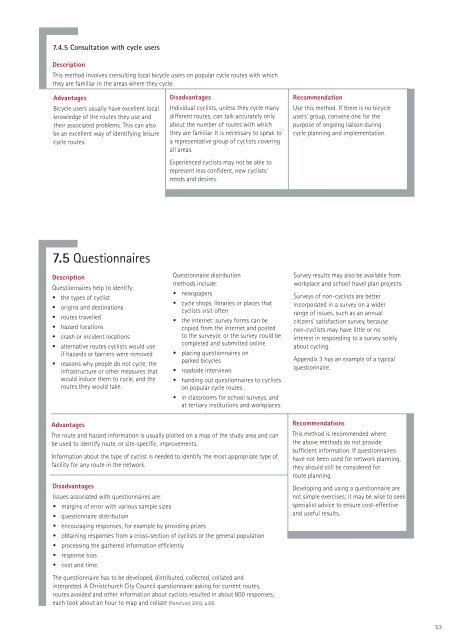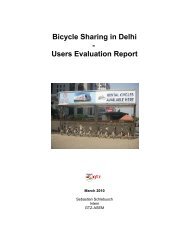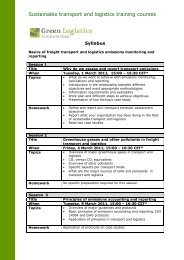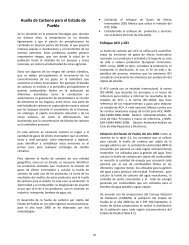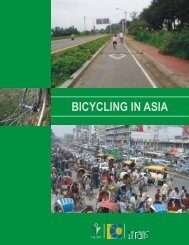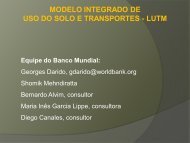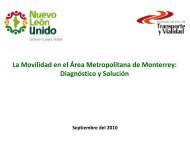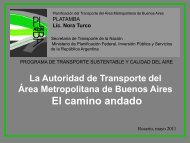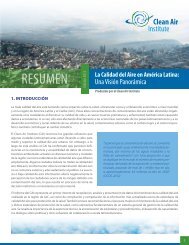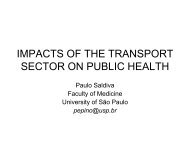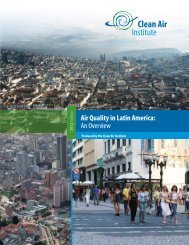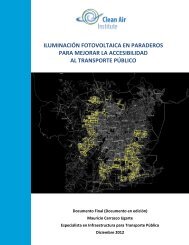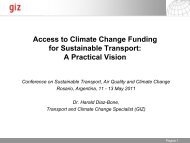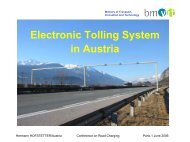CYCLE NETWORK AND ROUTE PLANNING GUIDE
CYCLE NETWORK AND ROUTE PLANNING GUIDE
CYCLE NETWORK AND ROUTE PLANNING GUIDE
You also want an ePaper? Increase the reach of your titles
YUMPU automatically turns print PDFs into web optimized ePapers that Google loves.
7.4.5 Consultation with cycle usersDescriptionThis method involves consulting local bicycle users on popular cycle routes with whichthey are familiar in the areas where they cycle.AdvantagesBicycle users usually have excellent localknowledge of the routes they use andtheir associated problems. This can alsobe an excellent way of identifying leisurecycle routes.DisadvantagesIndividual cyclists, unless they cycle manydifferent routes, can talk accurately onlyabout the number of routes with whichthey are familiar. It is necessary to speak toa representative group of cyclists coveringall areas.Experienced cyclists may not be able torepresent less confident, new cyclists’needs and desires.RecommendationUse this method. If there is no bicycleusers’ group, convene one for thepurpose of ongoing liaison duringcycle planning and implementation.7.5 QuestionnairesDescriptionQuestionnaires help to identify:• the types of cyclist• origins and destinations• routes travelled• hazard locations• crash or incident locations• alternative routes cyclists would useif hazards or barriers were removed• reasons why people do not cycle, theinfrastructure or other measures thatwould induce them to cycle, and theroutes they would take.Questionnaire distributionmethods include:• newspapers• cycle shops, libraries or places thatcyclists visit often• the internet: survey forms can becopied from the internet and postedto the surveyor, or the survey could becompleted and submitted online• placing questionnaires onparked bicycles• roadside interviews• handing out questionnaires to cyclistson popular cycle routes• in classrooms for school surveys, andat tertiary institutions and workplaces.Survey results may also be available fromworkplace and school travel plan projects.Surveys of non-cyclists are betterincorporated in a survey on a widerrange of issues, such as an annualcitizens’ satisfaction survey, becausenon-cyclists may have little or nointerest in responding to a survey solelyabout cycling.Appendix 3 has an example of a typicalquestionnaire.AdvantagesThe route and hazard information is usually plotted on a map of the study area and canbe used to identify route, or site-specific, improvements.Information about the type of cyclist is needed to identify the most appropriate type offacility for any route in the network.DisadvantagesIssues associated with questionnaires are:• margins of error with various sample sizes• questionnaire distribution• encouraging responses, for example by providing prizes• obtaining responses from a cross-section of cyclists or the general population• processing the gathered information efficiently• response bias• cost and time.The questionnaire has to be developed, distributed, collected, collated andinterpreted. A Christchurch City Council questionnaire asking for current routes,routes avoided and other information about cyclists resulted in about 800 responses;each took about an hour to map and collate (Transfund, 2003, p.20).RecommendationsThis method is recommended wherethe above methods do not providesufficient information. If questionnaireshave not been used for network planning,they should still be considered forroute planning.Developing and using a questionnaire arenot simple exercises; it may be wise to seekspecialist advice to ensure cost-effectiveand useful results.53


